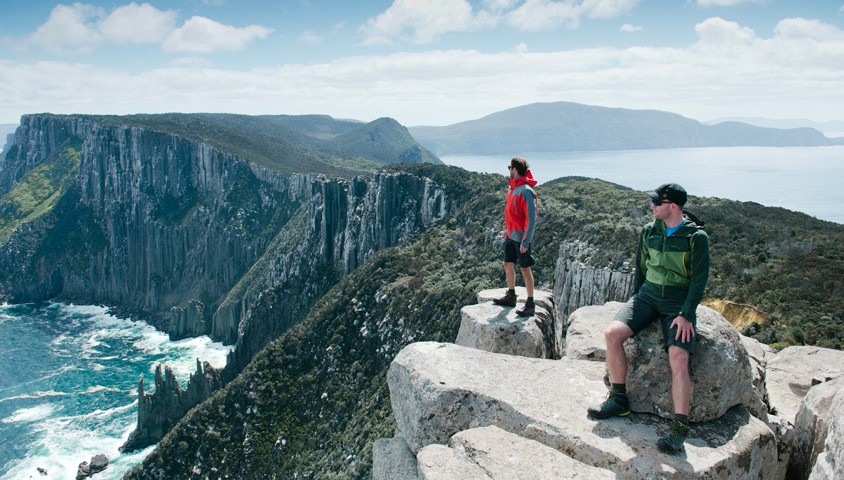Ongoing upgrade and extension works to Tasmania’s Three Capes Track continue to be a source of concern for local conservation groups and local walking clubs.
The state’s Parks and Wildlife Service is hailing it the ‘largest and most ambitious track project’ it has undertaken, with two track construction crews working to complete the track itself as well as overnight hut sites.
Once construction is complete, the Three Capes Track will be a 46-kilometre walking track that takes in the Tasman Peninsula, allowing visitors to see Cape Pillar and Cape Hauy, which includes the Southern Hemisphere’s tallest sea cliffs.
Ashley Rushton, project manager for the Three Capes Track expressed his excitement for the upcoming reopening of the track.
“Anyone who has been out to places such as The Blade at Cape Pillar can’t help but be blown away by the grandeur of this stunning coastline,” he said.
“It really is a walk on the edge, with inspiring views of Cape Raoul, Cape Pillar and Cape Hauy and the power of the Southern Ocean.”
The track is specifically aimed at drawing a broader range of visitors than other multi-day walks in Tasmania, such as The Overland Track. In fact, it will be the only hut-based independent walk in the country to provide visitors with mattresses and cooking facilities so that they do not have to pack items such as tents, bedding and stoves.
However, some interest groups are voicing skepticism for the project, with walking clubs and conservation groups expressing their concern.
Storm Foulkes, president of the Hobart Walking Club stated that the Three Capes Track will “change the way that walkers experience this beautiful area and will open it up to more ‘soft end’ walking”.
Members of the Hobart Walking Club have a particular interest in the track, as many of them helped to open the original system of walking tracks.
“Most of the area’s original bushwalking tracks, upon which the Three Capes Track is being built, were cut by Hobart Walking Club volunteers in over 8,000 days of work. We considered this to be a free community service, with the intention that the tracks were there for all to enjoy.
“Our only concern would be if the new track development restricted in any way free access by Tasmanian bushwalkers to the area, which is really our backyard.”
Yet with all the costs of construction as well as ongoing hut and track maintenance fees, it’s highly unlikely that any visitors will have free and unfettered access to the Three Capes Track; Parks and Wildlife have already confirmed that there will be a booking system and associated fees for all visitors keen to spend more than one day on the track. Popular day walks such as Cape Hauy, Cape Raoul and Shipstern Bluff will continue to be available to any visitors with a valid park entry pass.
It is the financial equation that is a great cause of concern for the Tasmanian Conservation Trust‘s Peter McGlone, who highlighted the fact that this project requires “a massive amount of tax-payers’ money to construct a track to Cape Pillar and Cape Hauy when there is existing track access”.
“They could have spent a fraction of the amount of money to improve the existing tracks and this could have avoided the very significant environmental damage from the Three Capes Track,” he said.
While Parks and Wildlife has predicted that as many as 10,000 visitors will walk the new track every year, this would mean each would need to be charged at least $100 in order to cover estimated maintenance costs of over $1 million.
Not only will this exercise be potentially wasteful, McGlone also raised serious concerns regarding sections of the track that are being built over “near pristine” wilderness.
“About half of this stage of the Three Capes Track will be new tracks, including along the currently trackless western side of Cape Pillar. This area is near pristine, some say wilderness, as there is very little impact from since European settlement, but this will change soon.”
Ultimately, Tasmania’s Parks and Wildlife Service believe the upgrades will cause minimal damage to wildlife in the area and, given the additional accessibility of the track, a broader appeal will soon ensure the project pays itself off as a tourism investment.
“The track represents a significant investment in Tasmania’s tourism infrastructure and in creating jobs on the Tasman Peninsula,” said Rushton. “As with the Overland Track, revenue raised through the fees will be spent directly on all aspects of maintaining a quality experience for walkers.”



